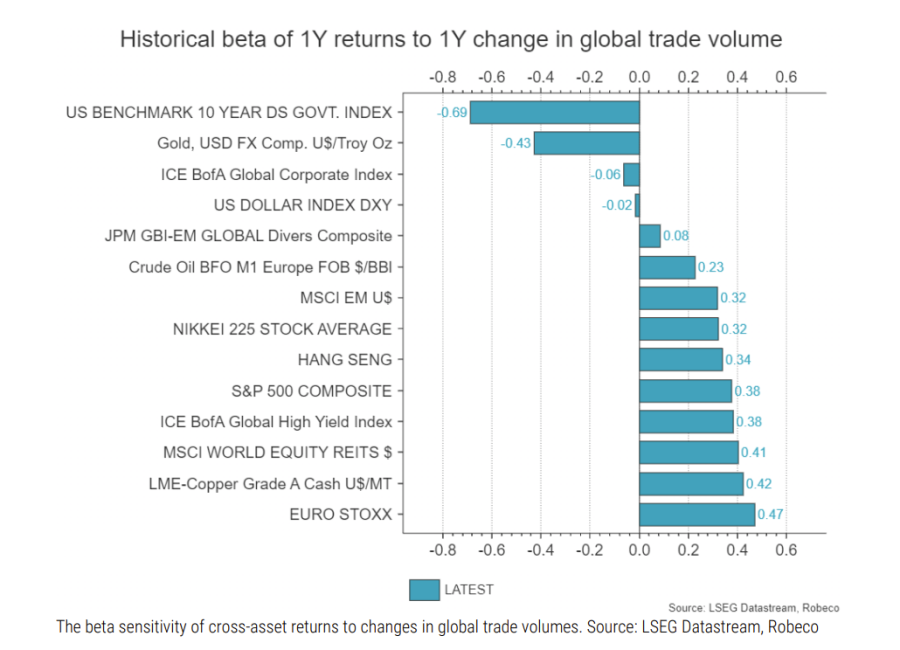US president Donald Trump’s attack on the world order through his punitive global tariff tirade has shocked markets. Trustnet has written a lot this week about what fund managers think about the news, the likely winners and losers and how to diversify in a turbulent market.
The scale of these tariffs cannot be overstated. According to John Plassard, senior investment specialist at Mirabaud Group, if they are applied until 2026 US inflation will be 2.1 percentage points higher over 12 months, with a knock-on effect on 60% of commodities.
US growth will falter until the middle of next year due to weaker consumer activity and higher costs, with around 600,000 job losses in America’s retail, logistics and consumer sectors.
But the damage will not just be kept to the US. In the eurozone, for example, these measures could reduce GDP growth by between 0.3 and 0.5 percentage points, he said.
A chart from Robeco underscores how few areas investors will have to hide if global trade is adversely affected. It shows that only US government bonds, gold and, to a lesser extent, corporate bonds have a negative beta with global trade. This means that historically, when global trade has contracted, these asset classes have performed well, so they could be considered as hedges against a slowdown in trade flows.

The US dollar is broadly flat, although there are question marks over whether it will hold up this time around, or if it too could come under pressure.
Meanwhile, the worst areas to invest currently appear to be Europe, commodities other than gold, real estate and the US stock market – so pretty much everywhere else.
For investors who want to buy into asset classes that should do well going forward, Ed Monk, associate director at Fidelity International, had some suggestions.
He noted that bonds are already showing signs of strength in the short timeframe since Trump’s announcement on Wednesday.
“The yield on 10-year US treasuries is now just a fraction above 4%. It was 4.5% as recently as 18 February, the day before the peak in the S&P 500. Yields on similar bonds issued by other governments have also fallen,” he said. UK, German and French government bond yields are also down slightly, which means their prices have risen.
One option he suggested is the iShares Overseas Government Bond Index Fund, which tracks an index of global government bonds for a low charge of 0.11%. Another of interest could be the Colchester Global Bond Fund, a portfolio of mainly government bonds with a particular focus on investments that are sought after in times of uncertainty.
Then there is gold, which continues to shine. It has been the best asset to add to a portfolio over the past year and shot higher again in dollar terms this week after the announced tariffs.
It is already at record highs thanks to the uncertainty injected into financial markets this year and tends to perform best when fear is at its highest, said Monk.
“A straightforward way to gain exposure to gold is via the iShares Physical Gold ETC. For a low cost of 0.11% it will closely replicate the performance of the gold price.
“Another option is to buy a fund of gold mining company shares, such as the Ninety One Global Gold Fund. The fund is correlated to movements in the gold price but is affected by other factors as well.”
While I do not advocate for making snap decisions based on short-term noise, these tariffs are likely to have big and long-lasting implications for markets moving forward. Whether it be bonds, gold or even cash, it is certainly worth considering adding some diversification to your portfolio if you have not done so already.





